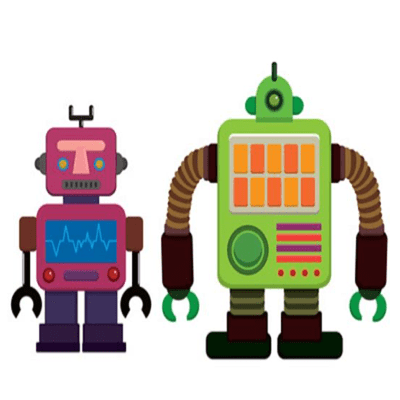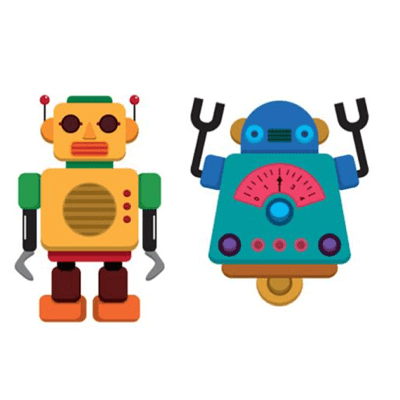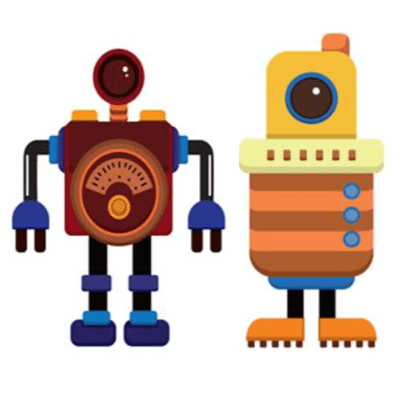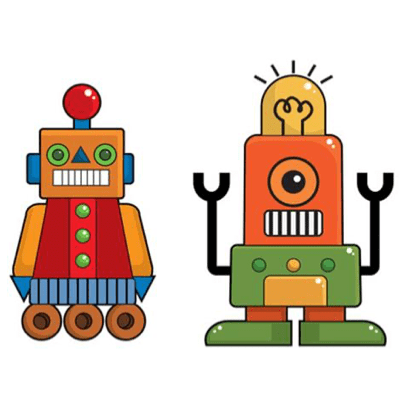

Peer teaching is a powerful learning tool that can benefit both the teacher and the learner. When students teach each other, they have the opportunity to deepen their own understanding of the material and to develop their communication and collaboration skills. Robert E. Slavin
Introduction to Peer Teaching
Peer Teaching is the fourth Evidence Based Learning skill proven by research to maximise learning.
Peer teaching leads to increased motivation, engagement and understanding of the material.
Peer teaching usually involves learners teaching their peers, either through one-on-one tutoring or small group instruction.
This type of learning has been shown to have a number of benefits, including increased motivation, engagement, and understanding of the material.
Furthermore, peer teaching helps learners develop important thinking skills, such as critical thinking and problem-solving, as well as communication skills.
Peer teaching maximises learning
By developing peer teaching skills, learners take responsibility for their own learning, as well as the learning of their peers, creating a supportive and collaborative learning environment.
Developing peer teaching skills helps create a dynamic and supportive learning environment where learning is maximised.
What is peer teaching?
I am going to teach you how
to tear this tennis ball apart.
Peer teaching occurs when learners, by design, teach other learners.
The Definition Of Peer Teaching: A Sampling Of Existing Research Nov 2019
What is peer learning?
I have learnt so much about tearing tennis
balls apart from you!
Peer learning is the process of learners learning with and from each other.
Peer Learning – Learning Intranet – Curriculum Design 2022 ECU Australia
Teaching something to someone else is the best way to learn it


You never really know something until you try to teach it to someone else.
Each time you step before your class, you marshal a range of skills and knowledge that, together, enable you to guide learners toward an understanding of the lesson content.
You’ve most likely recognised that in preparing and delivering your course you’ve come to master the material in a way that is different, and superior in some ways, to the mastery obtained through the role of learner.
Any activity that requires your learners to modify and broaden their role in this way – by teaching others – will encourage active learning.
Using Active Learning in the Classroom – ERIC Digest ERIC Development Team The University of Nebraska-Lincoln
USC Center for Excellence in Teaching University of Southern California
Peer teaching is not a new concept


Peer teaching can be traced back to Aristotle’s use of learner leaders. It was first organised as a theory by Scotsman Andrew Bell in 1795, and later implemented into French and English schools in the 19th century.
The benefits of peer teaching are:
– Direct interaction between learners promotes active learning.
– Peer teachers reinforce their own learning by instructing others.
– Learners feel more comfortable when interacting with a peer.
– Peers share a similar vocabulary, allowing for greater understanding.
– Teachers have more time to focus on the next lesson.
How Peer Teaching Improves Student Learning and 10 Ways To Encourage It – June 2013 – informED
Peer teaching is not a new concept
Peer teaching is a form of collaborative learning because it involves interaction among peers in order to develop an understanding of content.
Is peer teaching a form of collaborative learning?
The Benefits of Peer Teaching (1)

Pupils learn by teaching others
Peer work is particularly valuable because the interchange will be in language that pupils themselves would naturally use, and because pupils learn by trying to teach and by being assessed by, their peers.
Full Marks for Feedback Making the Grade – Paul Black Journal of the Institute of Educational Assessors – Spring 2007
The Benefits of Peer Teaching (2)

Peer teaching deepens understanding and contributes to a supportive and collaborative learning environment
Peer teaching is a valuable pedagogical strategy that provides learners with opportunities to apply their understanding and to learn from one another.
By teaching their peers, learners not only deepen their own understanding, but also contribute to a supportive and collaborative learning environment.
Richard M. Felder and Barbara A. Soloman – Teaching and Learning STEM: A Practical Guide – John Wiley & Sons 2015
The learning benefits of peer to peer learning (1)

Receiving information and knowledge from a peer is different from receiving it from a teacher.
A peer may be better suited to explain that topic to the learner, by explaining it in their own words and by having only just learnt the topic themselves.
Adapted from: 5 Main Benefits of Peer-to-Peer Learning 2023
Adapted from: Peer Square
The learning benefits of peer to peer learning (2)

Evidence is accumulating that peer learning creates greater confidence and independence in learning, a deeper understanding and improved grades for both peer teachers and their pupils.
This reinforces the idea that if you teach a peer a subject, you gain a deeper understanding of that subject.
Adapted from: Benefits of peer to peer learning – Feb 2014
The learning benefits of peer to peer learning (3)

Peer learning is an educational method that helps learners solidify their knowledge by teaching each other. One learner tutoring another in a supervised environment can result in better learning and retention.
Why? Because to teach one another, each peer must first fully understand a concept themselves.
Verbalising a concept and then sharing the information with a peer serves to reinforce the knowledge gained.
Peer Learning: Overview, Benefits, and Models – Sept 2022 WGU – Western Governors University
Peer learning fosters social skills

Peer learning fosters teamwork, cooperation, patience, and better social skills.
Peer Learning: Overview, Benefits, and Models – Sept 2022 WGU – Western Governors University
Peer learning fosters diversity

Peer learning fosters diversity and depth in a learner’s knowledge and opinions.
Learning from peers of different backgrounds, views, and ethnicities fosters an environment of mutual respect, gratitude, and progress.
It’s the differences between learners that add a richness to the learning environment.
Peer Learning: Overview, Benefits, and Models – Sept 2022 WGU – Western Governors University
Peer learning helps learners to progress in their learning

Often, learners are not able to recognise the gaps in their own knowledge. But when they learn with their peers, they can see new processes for answering questions and come up with creative, collaborative solutions.
Importantly, they will carry these new perspectives, as well as a willingness to seek and accept feedback, with them as they progress in their education.
Peer Learning: Overview, Benefits, and Models – Sept 2022 WGU – Western Governors University
Peer learning builds bonds of friendship

There are social benefits to peer-to-peer learning.
The time that learners spend with one another helps build social bonds that transcend regular school hours.
By studying together and engaging with one another, learners enhance their social skills and build bonds and friendships.
5 Main Benefits of Peer-to-Peer Learning 2023 Adapted from: Peer Square
Conclusion on the benefits of Peer Teaching and Peer Learning

Peer teaching has become increasingly popular in many instructional settings in recent decades because it has demonstrated several valuable benefits.
For peer teachers, the experience can deepen their understanding of the subject and impart confidence.
For learners, peer learning can lead to improved attitudes and a more personalised, engaging, and collaborative learning experience, all of which can lead to higher achievement.
Peer Teaching can:
– Improve learners’ attitudes toward learning.
– Foster a more personalised learning experience.
– Engage learners through cooperative learning.
– Lead to higher academic achievement.
– Help peer teachers gain confidence and sharpen their own skills.
Benefits of Peer Teaching – Steven Fink – Feb 2020 Summer Tech
The benefits of peer teaching and learning (1)

If a learner learns exclusively from the teacher, they may only gain one new perspective.
Learning from their peers can add numerous helpful perspectives, nuances, and layers to a learner’s knowledge.
Peer Learning: Overview, Benefits, and Models – Sept 2022 WGU – Western Governors University
The benefits of peer teaching and learning (2)

Peer Teaching was developed by Professor Eric Mazur of Harvard University in the 1990s
Mazur argues that you can explain something better if you have just recently learnt it yourself – the process of ‘talking to your neighbour’ enables the issue and its complexities to be unpackaged.
Mazur argues that the interactions between the pupils are unique and difficult to replicate in teacher-pupil interactions. He claims that this methodology is particularly effective because, in a pairing of two pupils (one who has grasped the subject, one who hasn’t), the pupil that has grasped the subject has only recently done so and is therefore better placed to convey how they came to a particular conclusion.
Peer Instruction – Clark – Mar 2016 University of Kent
The learning benefits of peer to peer learning (3)

Peer teaching results in deep learning
All types of peer teaching have been shown to be highly effective in terms of boosting motivation, focus and depth of understanding. Studies have shown that the cognitive process of explaining solutions, and dealing with questions and misunderstandings will help to embed knowledge further into a pupil’s memory and enhance their understanding of the subject.
This process can result in ‘deep learning’, which is retained by the pupil’s long term memory, rather than ‘surface learning’, where information can dissipate from their memory.
Adapted from: ResearchGate – Peer to Peer Practices 2019
Adapted from: Erasmus
The learning benefits of peer to peer learning (4)

Some pupils are excellent teachers
Pupils who have just learned something are often better able than teachers to explain it to their classmates in a language and in a way that is understandable.
Formative Assessment and Self-Regulated Learning: A Model and Seven Principles of Good Feedback Practice Nicol and Macfarlane-Dick
The learning benefits of peer to peer learning (5)

Peer tutoring pairs will build a rapport
The peer tutoring pair will build a rapport. The tutor is gaining self-confidence, and the pupil is learning how to listen to others.
The relationship between the two is more formal than on the playground or in an ordinary class setting. The pupils are learning to relate differently and work together to accomplish a group goal.
Work Together: The Pros and Cons of Peer Tutoring 2021 education world
Three benefits of peer to peer teaching and learning

Peer to peer teaching and learning may offer several benefits, including – but not limited to:
– Peer to peer teaching will help both peers learn.
– Peer to peer learning will improve each peer’s communication and social skills.
– Social interaction makes studying more enjoyable and allows learners to improve their communication and social skills
Peer Learning: Overview, Benefits, and Models – Sept 2022 WGU – Western Governors University
Peer Tutoring: What Is It and Is It Right for Your Student? Emergent Education
Possible drawbacks of peer teaching and learning

Peer to peer teaching and learning may offer several benefits, including – but not limited to:
While there are many benefits to peer learning, there are also some drawbacks, including distraction and lack of respect for feedback.
Working in Groups can be Distracting:
Learning from your peers can be exciting. However, especially for younger learners, that excitement can lead to distraction. When working with their friends, some learners can easily get off track, misbehave, and focus on anything but learning.
Learners might not respect Feedback from Peers:
If a teacher gives feedback, the learner is more likely to listen carefully. After all, the teacher is the authority in the classroom and the expert on the subject being taught. On the other hand, if one’s peer gives them feedback, it’s easier to disregard it.
Peer Learning: Overview, Benefits, and Models – Sept 2022 WGU – Western Governors University
Peer Learning: Overview, Benefits, and Models – Sept 2022
Conclusion
“Probably the biggest benefit of peer-to-peer learning is that it has a significant effect on improving academic achievement for learners.”

“Two heads are better than one”
Peer teaching is a type of collaborative learning that involves pupils working in pairs or small groups to discuss concepts or find solutions to problems.
Similar to the idea that ‘two heads are better than one’ educational researchers have found that in peer work pupils learn from each other by addressing misunderstandings and clarifying misconceptions.
Adapted from: Centre for Teaching Innovation – Cornell University 2019












